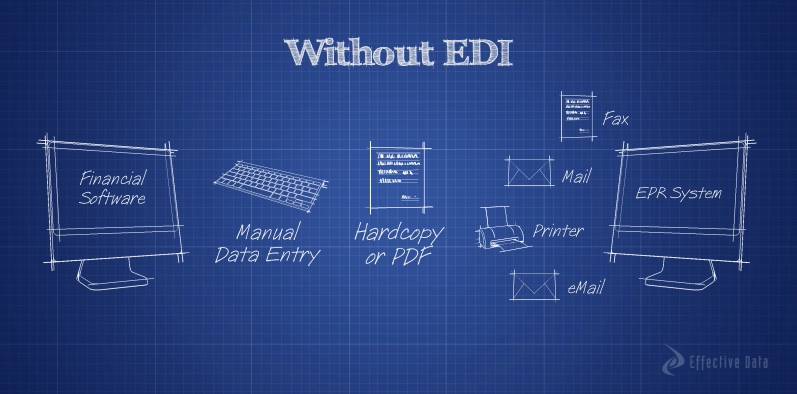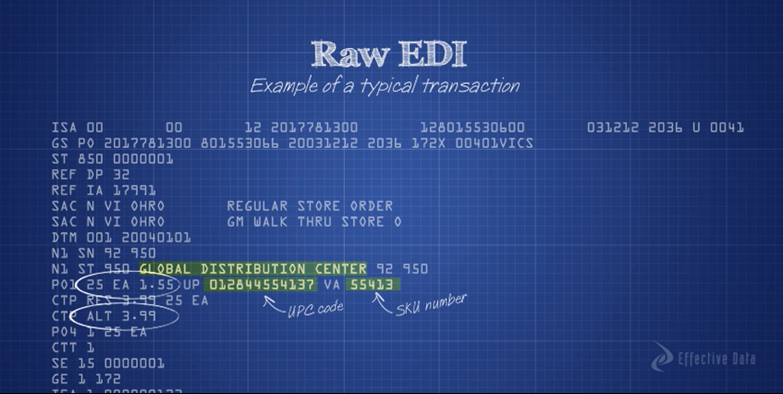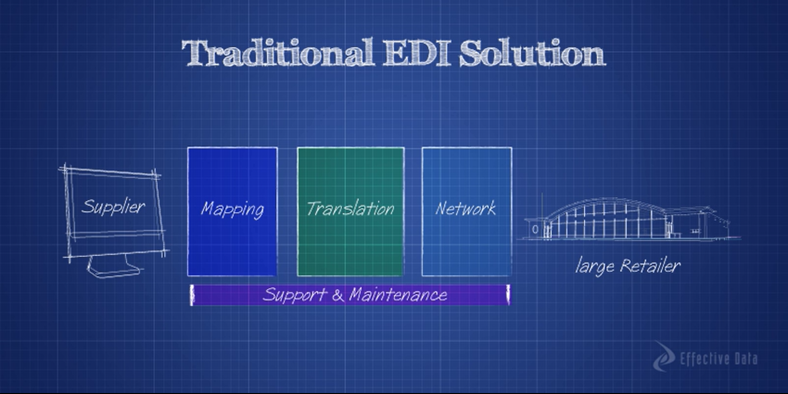What Is EDI?
You know EDI is essential to your business, but you’re not exactly sure how it works. You would like to know more about commonly transmitted EDI documents, the difference between raw EDI vs. human-readable formats, and the components of a successful EDI implementation. Find these answers and more below.
What Is EDI?
EDI stands for Electronic Data Interchange. It is a protocol maintained by the American National Standards Institute (ANSI) used for the computer-to-computer exchange of business transactions and business-to-business information exchange.
To understand and appreciate the value of EDI, let’s see how a transaction such as a purchase order is exchanged without EDI. Although the purchase order may start out as electronic data, along the way it might be printed to paper, then manually retyped into the receiving party’s business system. It’s easy to see the inconsistency and potential inaccuracy of all these manual steps, especially when data must be rekeyed.

With EDI, it allows businesses with two different business systems to use a common language to talk to each other. By automating the process, human interaction is minimized, and delays and mistakes can be greatly reduced and eliminated.
Raw EDI
Here is an example of the purchase order that has been converted to EDI format.

If you look closely, you’ll find that there are 25 items that charge $1.55 each with a list price of $3.99 each. They are going to be shipped to the retailer at Global Distribution Center. The item ordered is referenced by a UPC code and a corresponding SKU number. This format is not ideal for reading by you or me, but because it has been converted to the EDI protocol, it provides a very efficient and accurate way of exchanging this document between two different computer-based business systems.
Common EDI Transactions
There are hundreds of business documents that can be electronically transacted via EDI. Here are some common EDI document types:
- Purchase Order (850) – Used to initiate an order
- Invoice (810) – Sent to request payment
- Advance Ship Notice or ASN (856) – Let a company buying products know when and how their items will be shipped. ASNs often include barcode information that indicates specific items in the box.
- Functional Acknowledgement (997) – Simple but highly beneficial transactions that confirm the date and time the document transmitted via EDI was received. Imagine no longer having to wonder when you will be paid for an order because you’ll know exactly the day and time your customers received their invoice.
Key Benefits of Using EDI
The benefits of using EDI range from expediency and efficiency gains to being able to conduct business with the largest, most influential businesses in the world. Some key benefits of EDI include:
- Expedient transmissions
- Automated data entry
- Receipt verification
- Data validation
- Compliance
Traditional EDI Solution
To successfully implement a fully integrated EDI solution, four components are required.
- Integration / Mapping
- Translation
- Network
- Support & Maintenance
Here we have two trading partners who need to exchange business documents using EDI. On the left is the Supplier, and on the right is the customer, a large Retailer.

First, they need to be able to automatically move transactions to and from their backend and business or financial software without having to retype it. This is called integration. Data mapping software ensures that the EDI data being pushed and pulled appears in correct places in all of the documents.
Second, translation software converts those documents and their data to and from the EDI standard.
Third, just like a cell phone, a secure and reliable network is needed to be able to exchange EDI transactions with trading partners.
Finally, the fourth component, which is often overlooked, is the support and maintenance required to implement an EDI system and keep it running.
In a traditional EDI solution, each of these components is sourced through various providers that specialize in providing one of these services or software products.
The Effective-Data Solution
With the Effective-Data Solution, the complexity traditionally associated with EDI is avoided because we offer a true end-to-end solution. We implement everything a user needs for a cost-effective EDI solution.
Summary of EDI
To summarize, EDI is a protocol maintained by ANSI that provides a common language that enables the computer-to-computer exchange of business documents, such as purchase orders and invoices. EDI streamlines the procurement process, making it efficient and expedient, by reducing or eliminating manual data entry.

 Our Company
Our Company